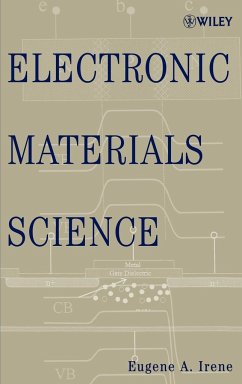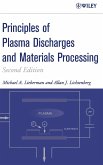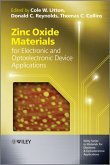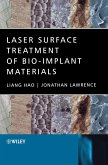This text covers traditional materials and science topics like diffraction, phase equilibria, structure and mechanical properties of solids, etc., with the primary focus on electronic materials. It treats each topic at a higher level than is done in a typical undergraduate textbook. In particular, the incorporation of reciprocal space, electron energy band theory, and thermodynamics requires that the reader have an understanding of basic physical chemistry. Also included is information on junctions and devices, as well as applications in optoelectronics and nanoelectronics.
A thorough introduction to fundamental principles and applications
From its beginnings in metallurgy and ceramics, materials science now encompasses such high- tech fields as microelectronics, polymers, biomaterials, and nanotechnology. Electronic Materials Science presents the fundamentals of the subject in a detailed fashion for a multidisciplinary audience. Offering a higher-level treatment than an undergraduate textbook provides, this text benefits students and practitioners not only in electronics and optical materials science, but also in additional cutting-edge fields like polymers and biomaterials.
Readers with a basic understanding of physical chemistry or physics will appreciate the text's sophisticated presentation of today's materials science. Instructive derivations of important formulae, usually omitted in an introductory text, are included here. This feature offers a useful glimpse into the foundations of how the discipline understands such topics as defects,phase equilibria, and mechanical properties. Additionally, concepts such as reciprocal space, electron energy band theory, and thermodynamics enter the discussion earlier and in a more robust fashion than in other texts.
Electronic Materials Science also features:
_ An orientation towards industry and academia drawn from the author's experience in both arenas
_ Information on applications in semiconductors, optoelectronics, photocells, and nanoelectronics
_ Problem sets and important references throughout
_ Flexibility for various pedagogical needs
Treating the subject with more depth than any other introductory text, Electronic Materials Science prepares graduate and upper-level undergraduate students for advanced topics in the discipline and gives scientists in associated disciplines a clear review of the field and its leading technologies.
A thorough introduction to fundamental principles and applications
From its beginnings in metallurgy and ceramics, materials science now encompasses such high- tech fields as microelectronics, polymers, biomaterials, and nanotechnology. Electronic Materials Science presents the fundamentals of the subject in a detailed fashion for a multidisciplinary audience. Offering a higher-level treatment than an undergraduate textbook provides, this text benefits students and practitioners not only in electronics and optical materials science, but also in additional cutting-edge fields like polymers and biomaterials.
Readers with a basic understanding of physical chemistry or physics will appreciate the text's sophisticated presentation of today's materials science. Instructive derivations of important formulae, usually omitted in an introductory text, are included here. This feature offers a useful glimpse into the foundations of how the discipline understands such topics as defects,phase equilibria, and mechanical properties. Additionally, concepts such as reciprocal space, electron energy band theory, and thermodynamics enter the discussion earlier and in a more robust fashion than in other texts.
Electronic Materials Science also features:
_ An orientation towards industry and academia drawn from the author's experience in both arenas
_ Information on applications in semiconductors, optoelectronics, photocells, and nanoelectronics
_ Problem sets and important references throughout
_ Flexibility for various pedagogical needs
Treating the subject with more depth than any other introductory text, Electronic Materials Science prepares graduate and upper-level undergraduate students for advanced topics in the discipline and gives scientists in associated disciplines a clear review of the field and its leading technologies.
"...very worthwhile text to learn advanced material sciencetheories that are focused on electronic materials." ( IEEEElectrical Insulation Magazine , May/June 2006)
"...the book is written well with good qualityfigures..." ( Journal of Metals Online , July 29,2005)
"...a good treatment of...materialsscience...brings together key aspects of applied physics,chemistry and mechanical engineering..." ( Journal ofMaterials Technology , Vol 20 (3) 2005)
"...the book is written well with good qualityfigures..." ( Journal of Metals Online , July 29,2005)
"...a good treatment of...materialsscience...brings together key aspects of applied physics,chemistry and mechanical engineering..." ( Journal ofMaterials Technology , Vol 20 (3) 2005)








